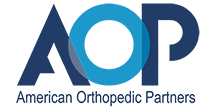
Strategic Planning for Orthopedic Practices: A Guide to Sustainable Growth
Ensuring the growth and sustainability of an orthopedic practice requires more than just medical expertise; it demands a strategic approach to planning and execution. At American Orthopedic Partners (AOP), we are dedicated to supporting orthopedic professionals with our extensive experience and innovative partnership model.
With this in mind, we offer the following tips for creating sustainable growth within your practice.
The Importance of Strategic Planning in Orthopedic Practices
Strategic planning is the cornerstone of a successful orthopedic practice. It involves setting long-term goals, identifying necessary resources, and creating actionable steps to achieve these objectives. Let’s delve into why strategic planning matters and how it can benefit your practice.
Why Strategic Planning Matters
Strategic planning is essential for orthopedic practices aiming to remain competitive, deliver high-quality care, and ensure financial stability. It enables practices to set clear objectives, allocate resources efficiently, and anticipate future challenges.
Key Benefits for Practices
- Improved Decision-Making: A strategic plan provides a structured framework for making informed decisions.
- Enhanced Patient Care: Aligning goals with patient needs improves service delivery.
- Financial Stability: Effective planning helps manage costs and optimize revenue streams.
- Staff Engagement: Involving staff in the planning process fosters a culture of collaboration and innovation.
Steps to Developing a Strategic Plan
Developing a strategic plan involves several critical steps. Each step sets the foundation for achieving sustainable growth and operational excellence. Here’s how to get started:
Conduct a SWOT Analysis
A SWOT analysis—evaluating strengths, weaknesses, opportunities, and threats—is a foundational step in strategic planning. This analysis helps identify internal capabilities and external challenges.
Set SMART Goals
Define clear, measurable, attainable, relevant, and time-bound (SMART) goals that align with the practice’s mission and vision.
Engage Stakeholders
Involve key stakeholders in the planning process, including physicians, administrative staff, and patients. Their insights and feedback are invaluable for creating a comprehensive and effective plan.
Implementing Your Strategic Plan
Once your strategic plan is developed, the next step is implementation. Successful implementation requires careful coordination and continuous monitoring. Here’s how to bring your plan to life:
Action Plans and Timelines
Develop detailed action plans outlining specific tasks, responsible parties, and deadlines to ensure accountability and focus on achieving set goals.
Monitoring and Evaluation
Monitor progress regularly and evaluate outcomes against established goals. Use data-driven insights to make necessary adjustments and stay on track.
Adapting to Changes
The healthcare environment is dynamic. Be prepared to adapt your strategic plan in response to new regulations, technologies, or market trends.
Leveraging Partnerships for Growth
Strategic partnerships can play a pivotal role in the growth of an orthopedic practice. Partnering with organizations like AOP offers unique advantages. Let’s explore how such collaborations can benefit your practice:
Benefits of Partnering with AOP
Partnering with AOP offers numerous advantages, including access to a national network of experts, shared governance, and clinical and operational excellence support. Our physician-led model ensures your practice benefits from both local autonomy and the scale of a larger organization.
Testimonials
”AOP offers the right partnership model for Premier Orthopaedic Associates, and the physician leadership, with its focus on local autonomy, is a clear differentiator. With AOP’s partnership and support, Premier will continue to work untiringly to serve the communities in which we live, work, and play.”
— Dr. Thomas A. Dwyer, Premier Orthopaedic Associates
“The two most important things in an organization such as AOP in its relationships with the doctors are 1) having the support and benefits of a larger organization where needed and 2) being able to continue practicing medicine as we had in the past before joining AOP.”
— Dr. Michael Vender, Hand to Shoulder Associates
Tools and Resources for Effective Planning
Recommended Tools
- Software: Tools like Microsoft Dynamics, Tableau, and SimplePractice can aid in data analysis and management.
- Frameworks: The Balanced Scorecard and Blue Ocean Strategy are effective frameworks for strategic planning.
Additional Resources
- Articles: “The Role of Strategic Planning in Healthcare” by Harvard Business Review1
- Books: Good to Great* by Jim Collins, *Blue Ocean Strategy* by W. Chan Kim and Renée Mauborgne2
Conclusion
Strategic planning is crucial for the sustainable growth of orthopedic practices. By adopting a structured approach and leveraging partnerships like those with AOP, practices can navigate the complexities of the healthcare landscape and achieve long-term success.
If you’re ready to take your practice to the next level, we invite you to contact us today for a consultation and explore how our partnership can support your strategic planning efforts. Visit our website for more information and additional resources.
———————-
References:
1 Harvard Business Review. “The Role of Strategic Planning in Healthcare.”
2 Kim, W. Chan, and Renée Mauborgne. Blue Ocean Strategy













Sorry, the comment form is closed at this time.